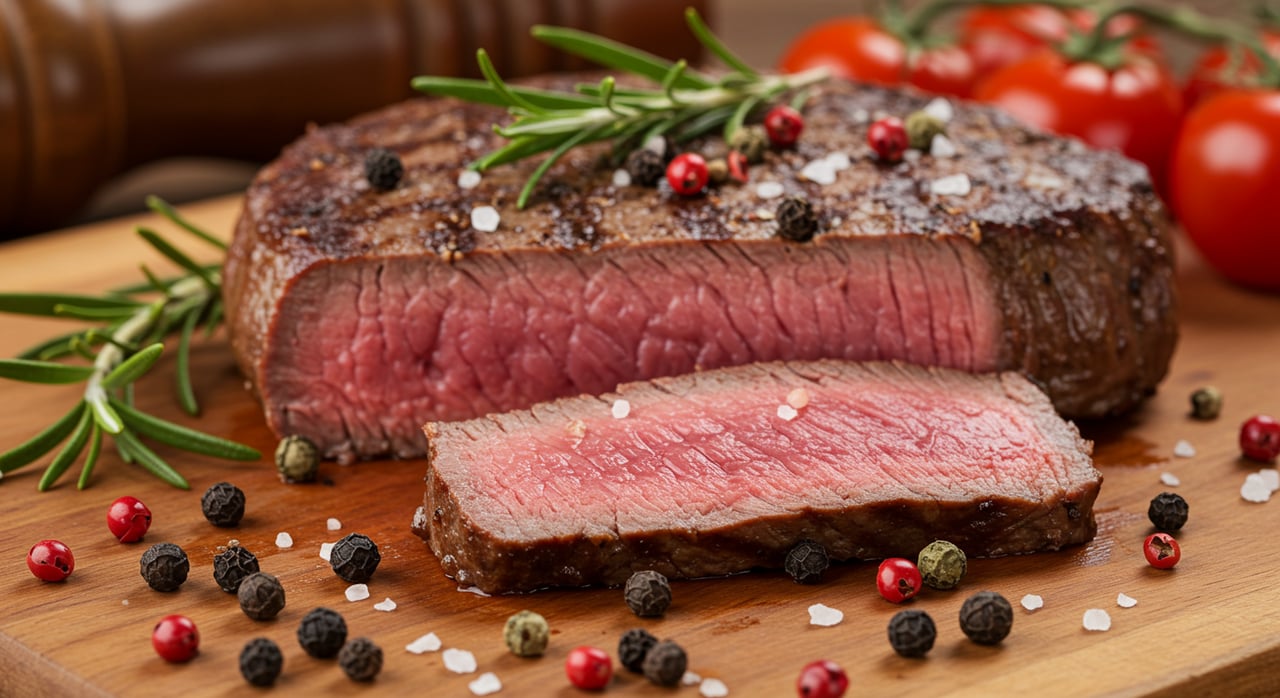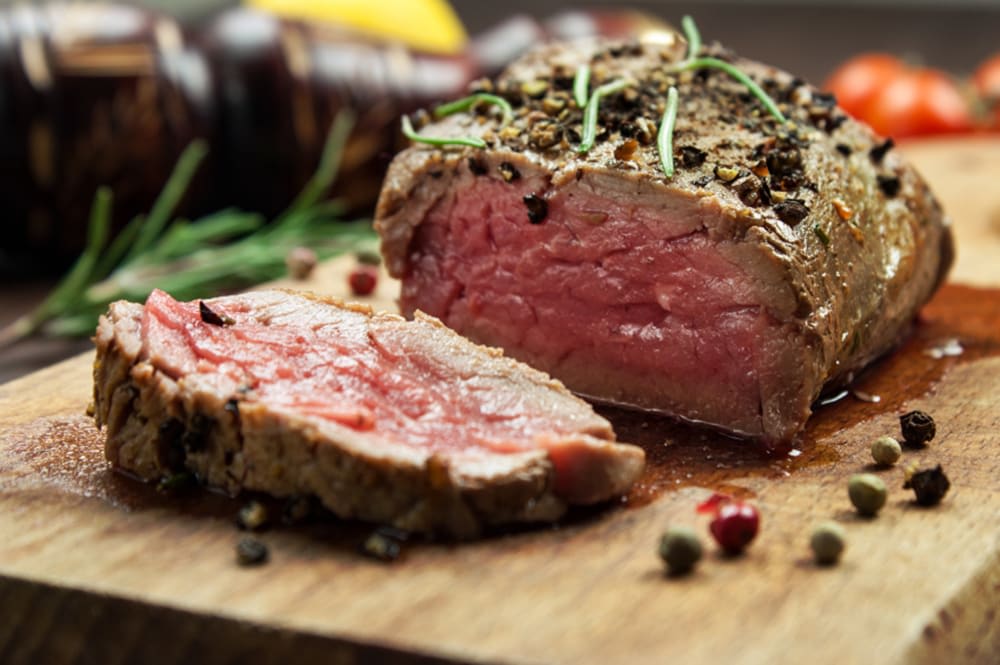
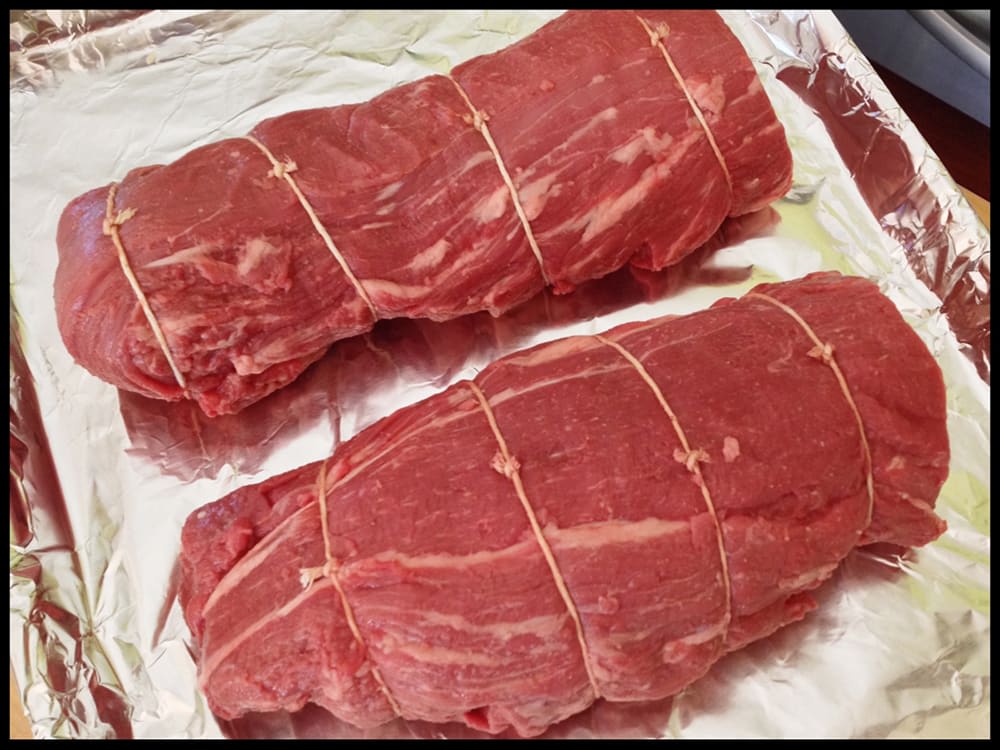
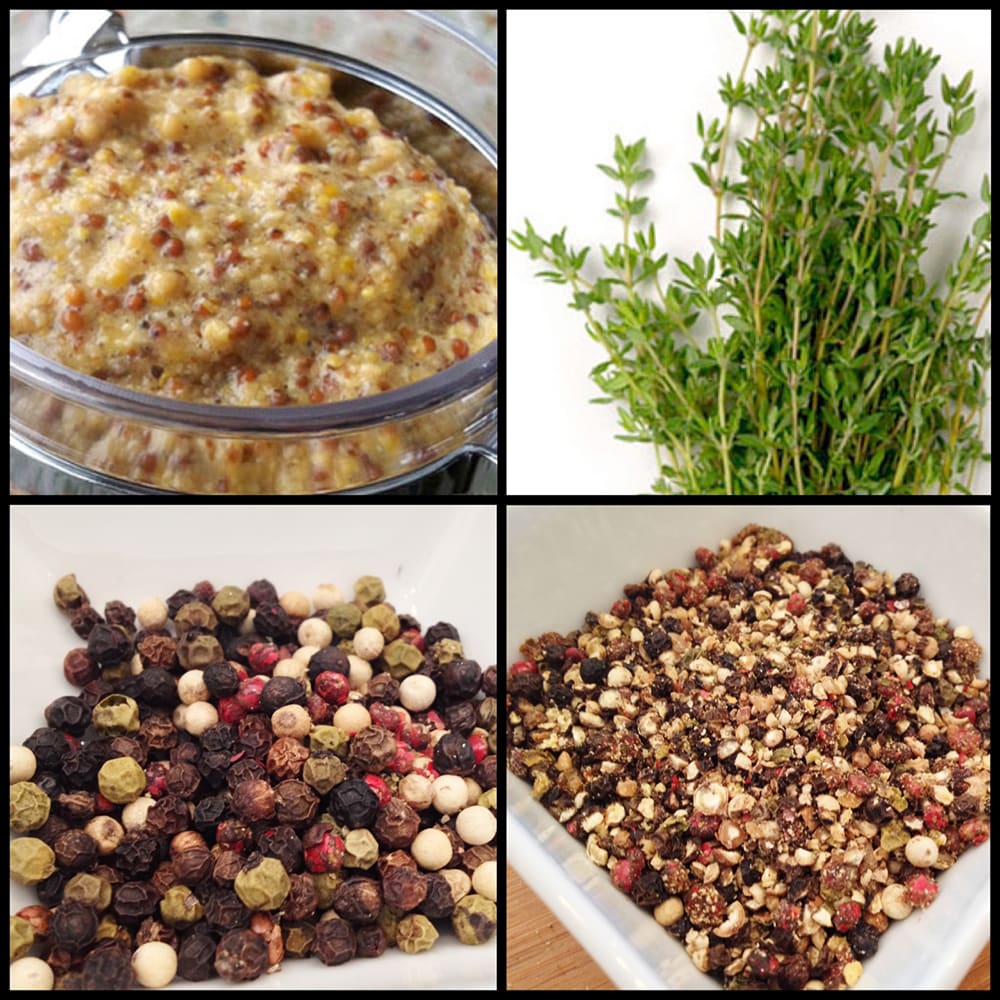
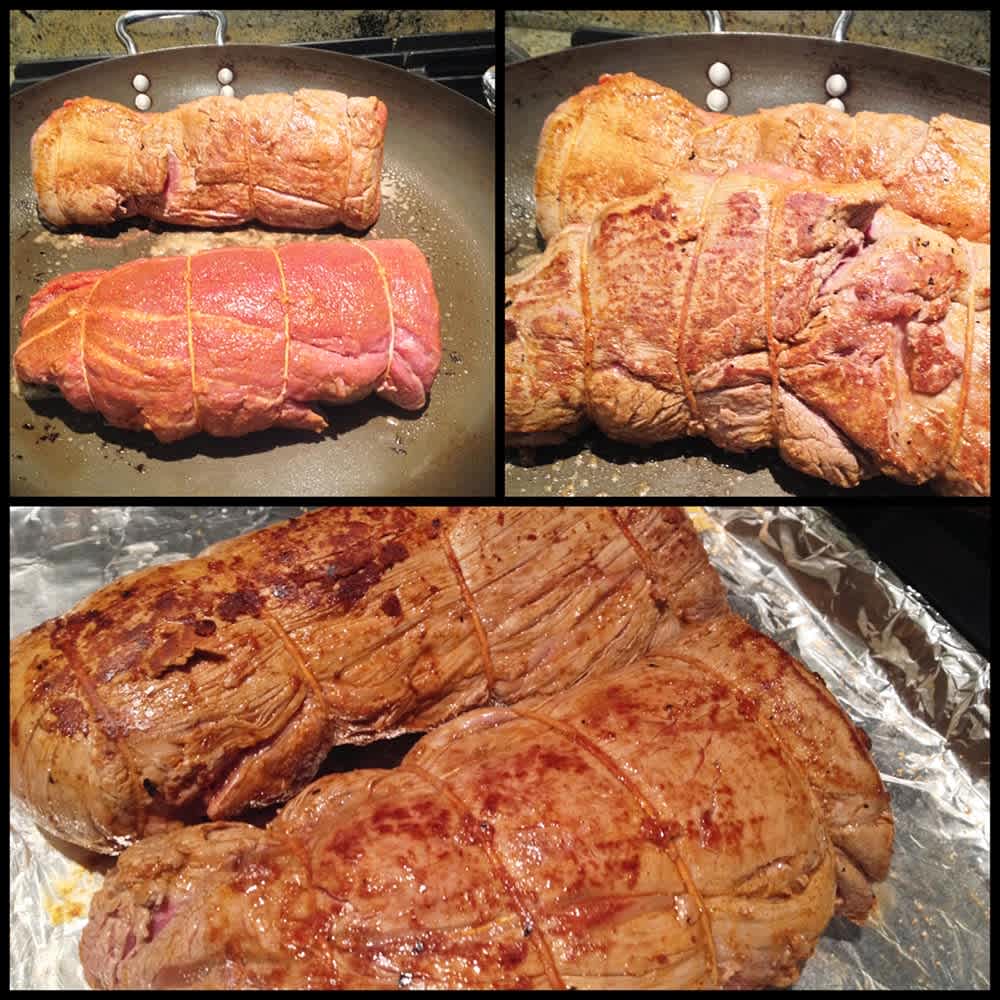
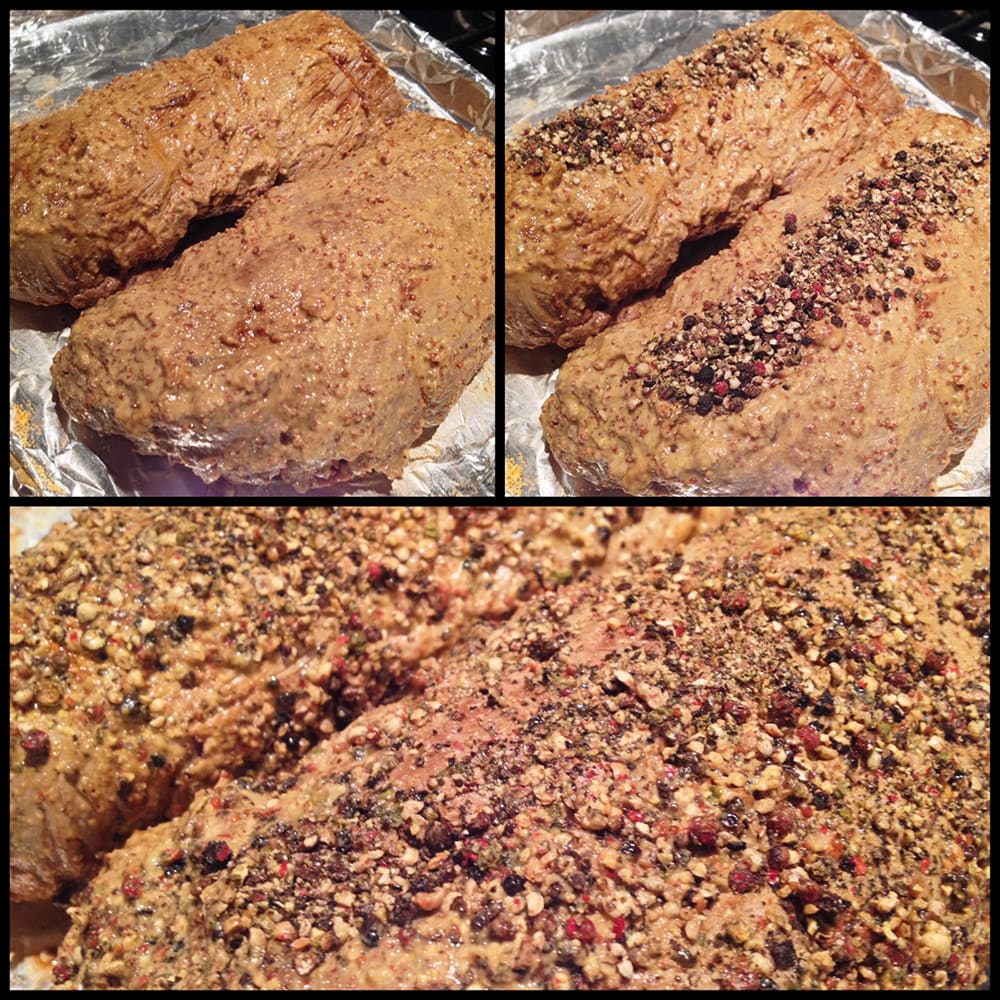
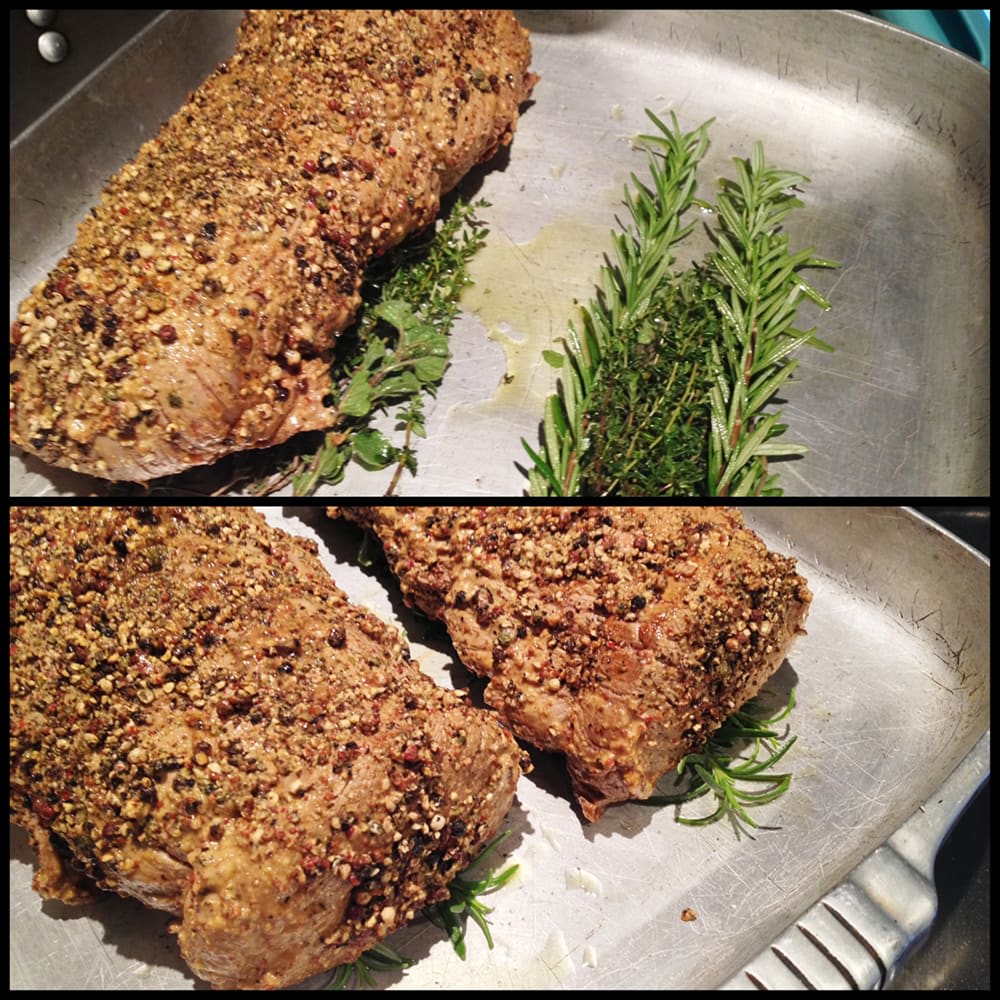
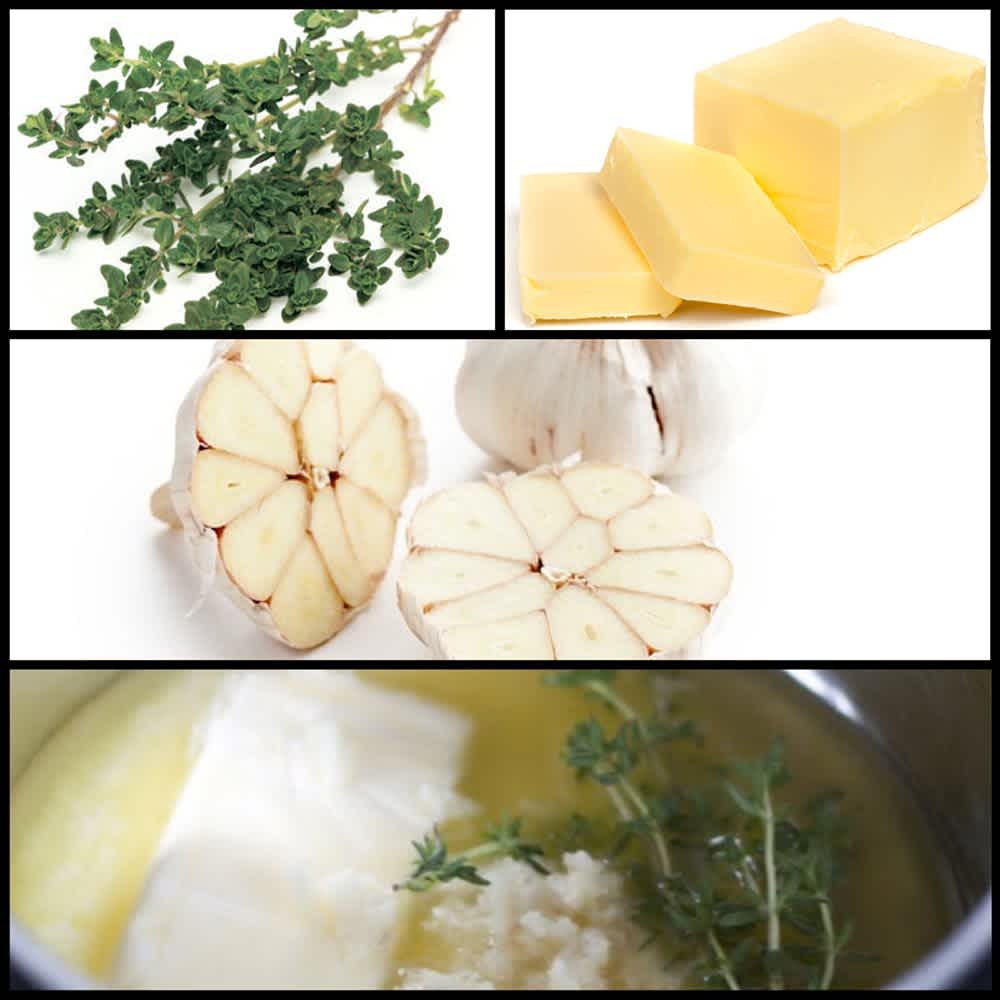
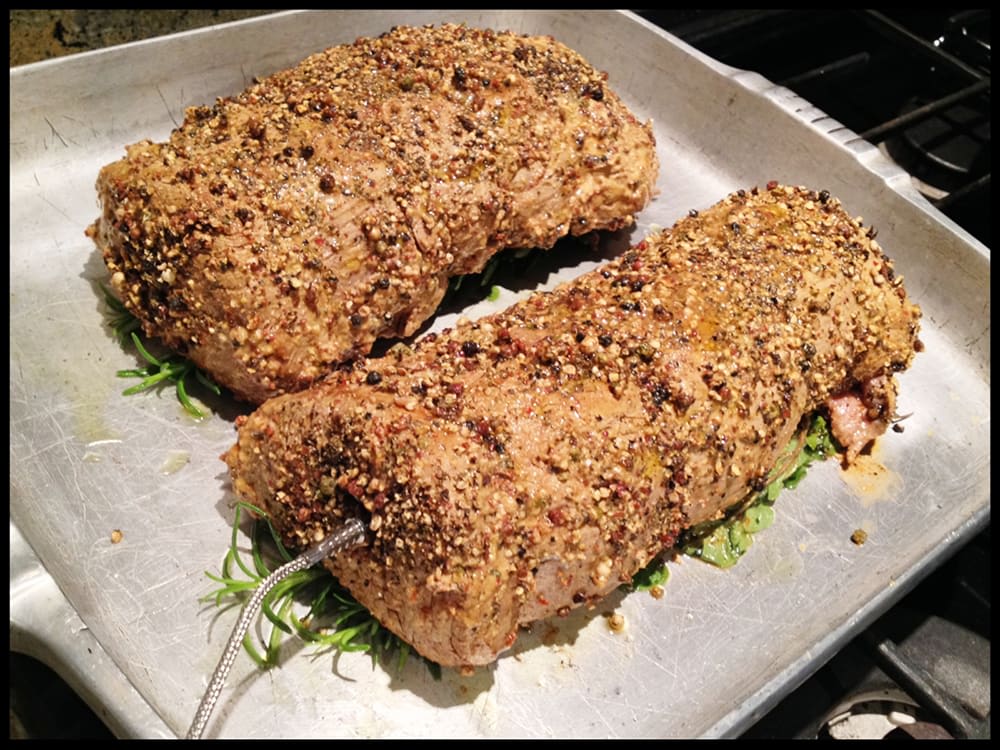

WHIPPED CREAM HORSERADISH
Whip cream until stiff peaks form. Fold in Lawry’s Seasoned Salt, horseradish and Tabasco until well mixed.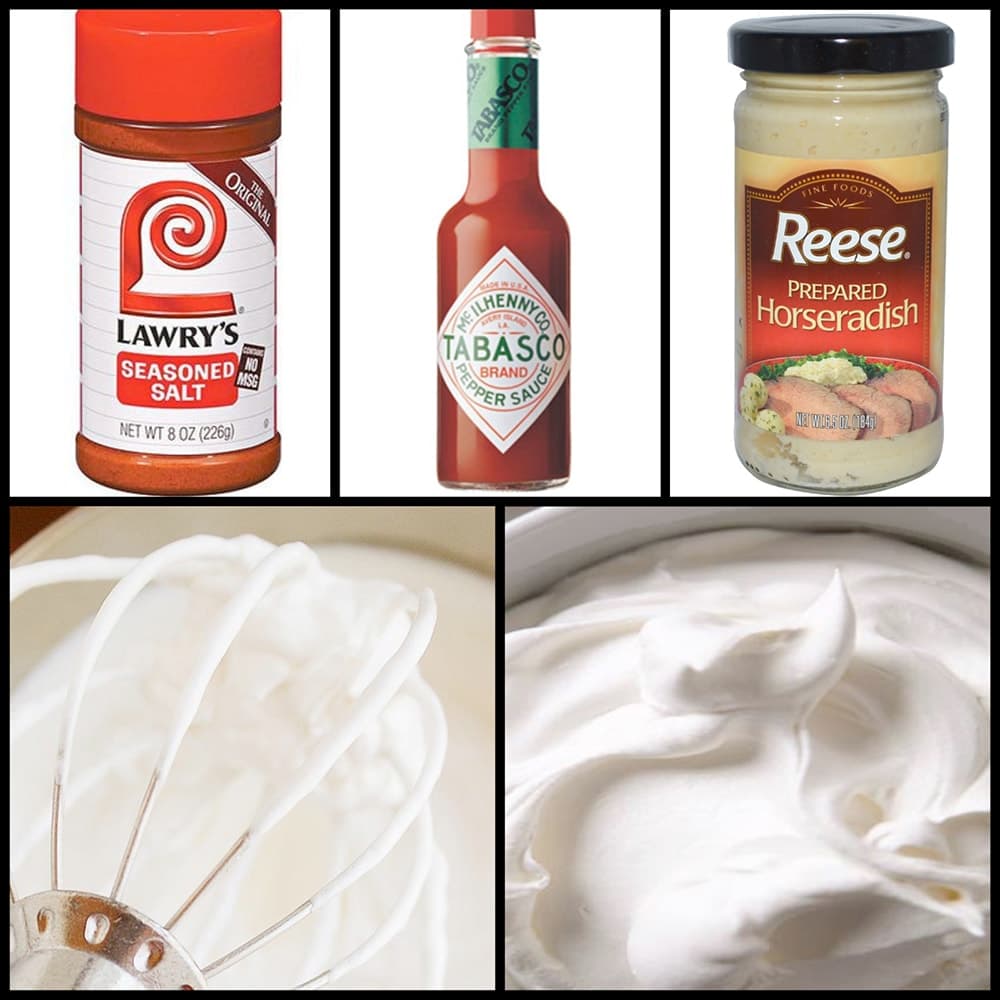
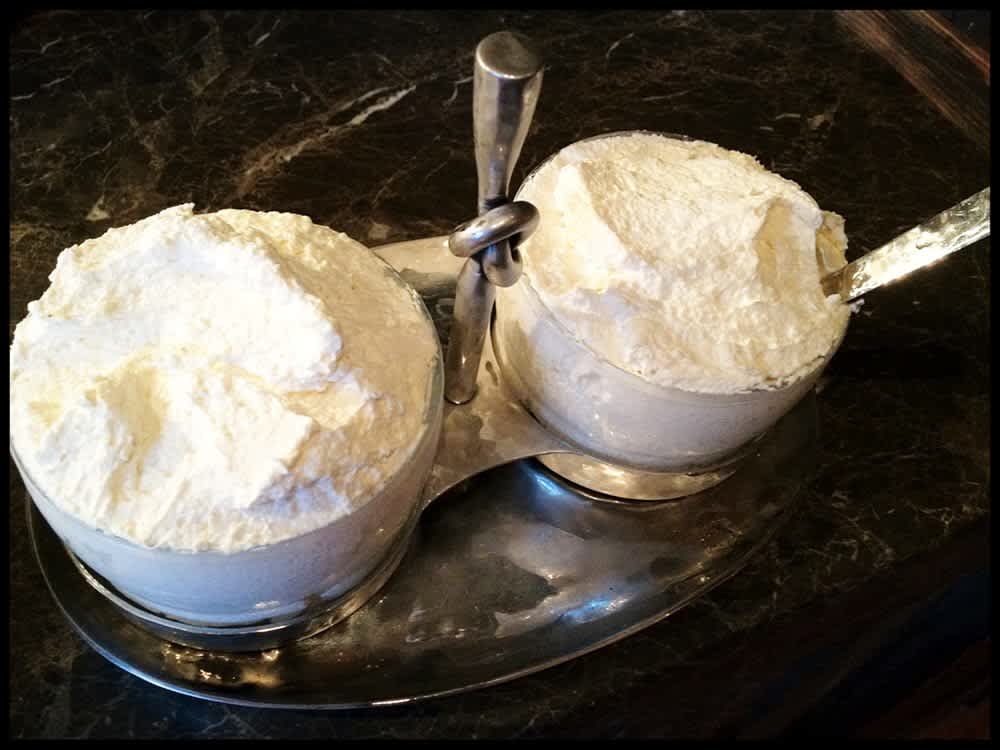
Sour Cream Horseradish
Simply mix sour cream and horseradish and season with salt and pepper to taste.Ingredients
Tenderloin
- 1 whole (4 To 5 Lbs.) Beef Tenderloin
- 1 stick Butter, unsalted
- 2 Garlic Cloves, crushed
- 2–3 Grain Mustard
- Lawry’s Seasoned Salt (Or Similar Salt Blend)
- Grape-seed Oil
- 1/4 C Whole Grain Mustard
- 1/4 cup Whole Mixed Peppercorns, More Or Less To Taste
- 1 tablespoon chopped fresh thyme, plus a small bunch (a few sprigs)
- 2 bunches of fresh herbs, such as rosemary, sage and marjoram
- Kitchen Twine
Whipped Cream Horseradish
- 1 cup whipping cream
- 1/4 teaspoon Lawry’s Seasoned Salt
- 2 tablespoons prepared horseradish, well drained, or 4 tablespoons finely grated fresh horseradish root
- Dash Tabasco sauce or more to taste
Sour Cream Horseradish
- 1 cup sour cream
- 1/4 cup prepared horseradish, drained
- Salt & Pepper to taste
Instructions
Tenderloin
- Preheat oven to 450 °F. Scatter the rosemary sprigs over the bottom of a large roasting pan.
- Cut the tenderloin in half. Two smaller roasts are easier to handle than one long one-and this way you can roast one more on the rare side and one more well done, so everyone’s happy. Tie your roast at regular intervals-this keeps the meat in a uniform, compact shape, which will help it cook more evenly. The twine should be firm, but not so tight that the beef bulges out. Season liberally with seasoned salt and set aside.
- Mix the grain mustard with the chopped thyme and. Set aside.
- Place the peppercorns in a Ziploc bag, and with a mallet, hammer or heavy pan, begin smashing the peppercorns to break them up a bit. Set aside.
- The best way to cook beef tenderloin is a two-step process: sear, then roast. That way, the tenderloin gets a nice crusty brown exterior without overcooking inside. Use enough oil to just coat the skillet, when the oil is to the smoking point, place the tenderloins in the very hot pan to sear them. At this point, add a couple of tablespoons of butter into the skillet. Sear, without disturbing them, until they’re browned. Then turn the tenderloins and sear on the other side. You’ll need to turn the tenderloins two or three times to sear all the sides. Remove from the hot pan and set aside.
- Brush the tenderloins all over with the mustard and herb blend and sprinkle with the crushed peppercorns. Press the pepper onto the surface of the meat.
- Place the two herb bundles on a roasting pan, drizzle with olive oil and place the prepared tenderloins on top.
- Place the remaining 6 tablespoons of butter in a sauce pan with the crushed garlic and thyme bunch. Heat slowly until the butter is melted and the garlic and thyme become fragrant. Discard the thyme and drizzle the garlic butter over the tenderloins. This is a good time to insert an oven safe probe thermometer into one end of the tenderloin to monitor the temperature.
- After about 15 minutes, check the internal temperature. For a tenderloin that’s medium-rare, look for an internal temperature of 120 °F. For medium, the internal temperature should be 125 °F. When the tenderloin is cooked the way you like it, remove it from the oven and allow it to rest at room temperature for 15 minutes before slicing. This will let the juices redistribute, so the meat is juicy all over.
- Slice tenderloin. Serve with Whipped Cream, Horseradish.
Whipped Cream Horseradish
- Whip cream until stiff peaks form.
- Fold in Lawry’s Seasoned Salt, horseradish and Tabasco until well mixed.
Sour Cream Horseradish
- Simply mix sour cream and horseradish and season with salt & pepper to taste.
Notes
Prep Notes: Prior to cooking, look at your tenderloin and make sure there’s no silverskin left on it—this is a silvery-looking thin membrane that stays tough when it’s cooked. If it hasn’t been trimmed off, you can do it yourself, running your knife just under the membrane. If the butcher hasn’t trimmed off the chain, which is a long, skinny, fatty piece of meat that runs the length of the tenderloin, you want to trim that off as well. We recommend removing it because it will cook at a different rate than the tenderloin.

